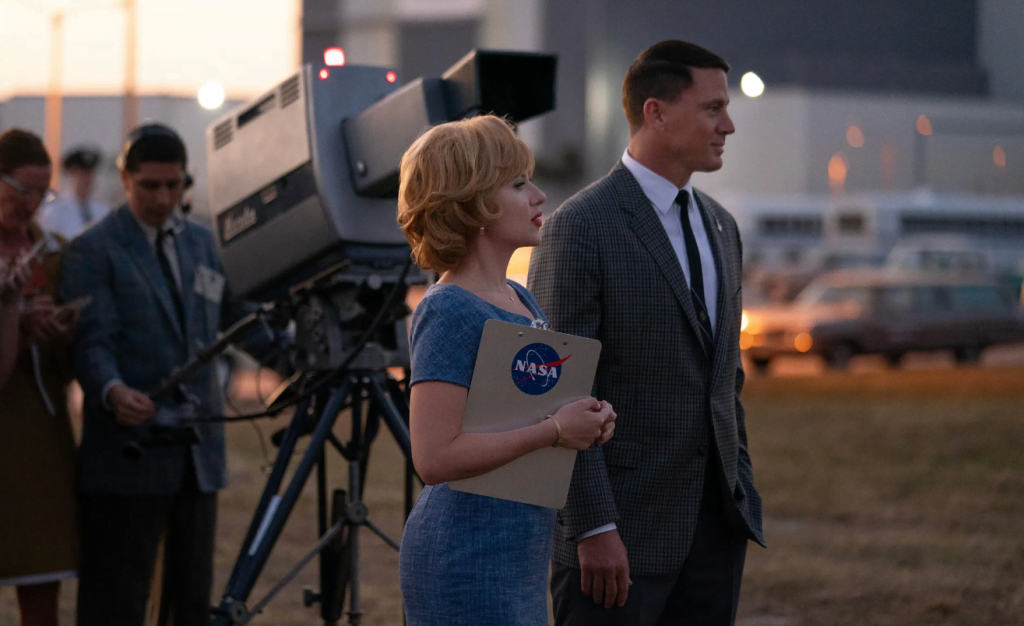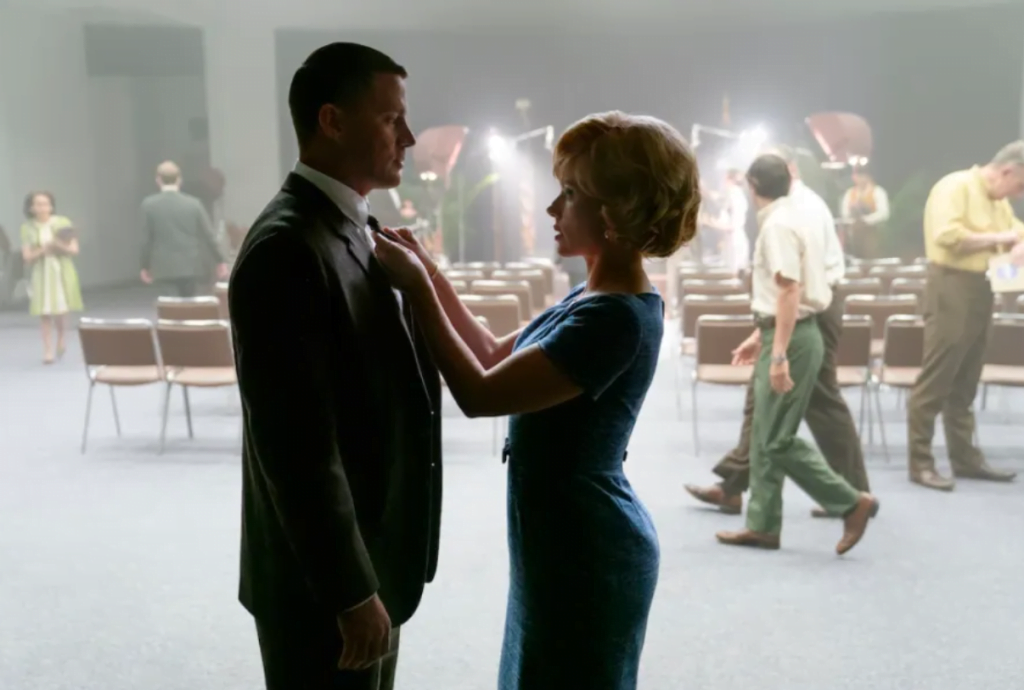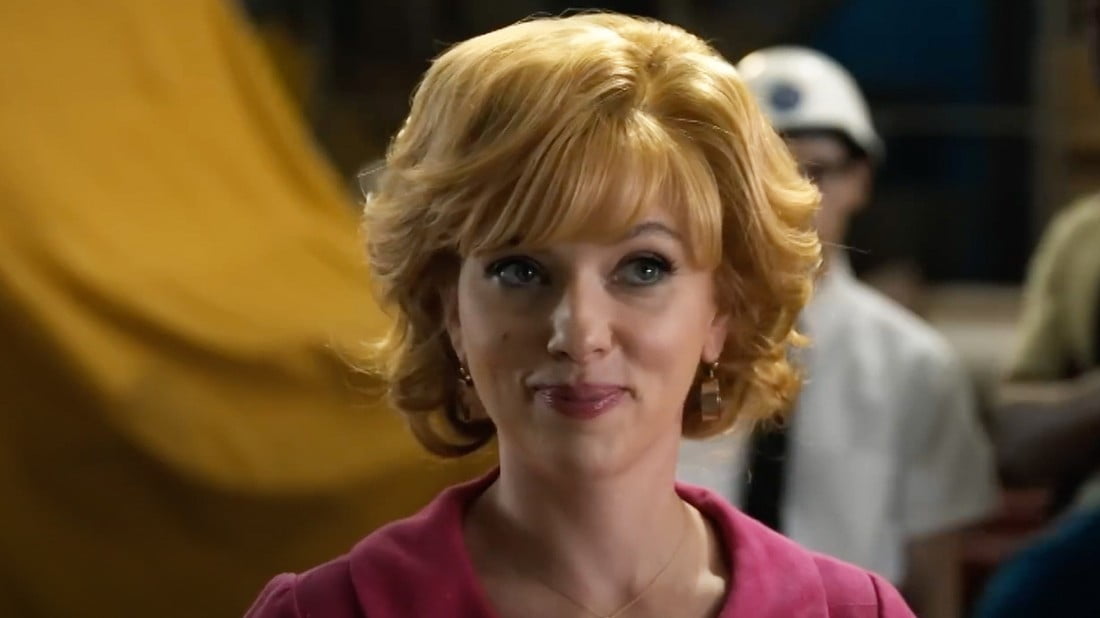‘Fly Me to the Moon,’ directed by Greg Berlanti and released in 2024, offers an exciting plot of the story that can be overviewed with a feminist lens. The female character, Kelly Jones, is played by Scarlett Johansson. Her character is set as bold, quirky, decision-maker, and authoritative, something not yet mainstream in the media as ‘normal.’
The film explores the themes of gender roles, professional dynamics, and the often-underappreciated achievements of women historically, all set against the backdrop of NASA’s Apollo 11 moon landing.
Breaking the stereotypes
Kelly Jones, a marketing expert, was brought to salvage NASA’s public image; she is a staunched, powerful, competent woman walking herself through a male-dominated workplace. Her character is set and played against the stereotypical role by defying gender norms and playing a crucial part in setting a prominent historical event. Johansson’s portrayal of the character Kelly Jones highlights the ongoing difficulties that women face to attain knowledge and leadership skills in her contribution to the industry which is frequently disregarded or suspected. Her character interactions with Channing Tatum, who played Cole Davis – a rigid launch director- who initially rejects her participation in the agency and her ideas, eloquently highlight this dynamic.

On the contrary, the White House instructed Kelly Jones to prepare for a fake lunar landing as a backup plan. The plot draws attention when the work is disproportionately distributed among men and women. All the women’s job is to ensure that the projects led by males succeed. This event is metaphorical in the sense that the women who usually carry and lead the work are often overlooked, even working tirelessly and behind the scenes. No forefront place of women is celebrated and only dismissed.
‘Fly Me To The Moon,’ in a way, challenges and questions the conventional norms and narratives that downplay the ‘invisible work,’ by the women contributing to high-stales projects by showcasing Kelly’s strategic thinking and crisis management.
Fly Me To The Moon and the second wave of feminism
The film is set in the 1960s, a time when women continuously fought for their legal rights and recognition. Kelly’s persona is also built from the societal expectations that are imposed on women to maintain themselves, manage work, and be calm. She deals with all of these issues after being in the workplace.

With the events of the 1960s and the growing second wave of feminism, this outlook deeply resonated with the debate on ‘personal is political.’ The debate deeply resonated by expressing the lived beliefs of women and feminists that the personal experience of women is rooted in their political situations and struggles of gender inequality. According to Britannica “Although the origin of the phrase ‘the personal is political’ is uncertain, it became popular following the publication in 1970 of an essay of the same name by American feminist Carol Hanisch, who argued that many personal experiences (particularly those of women) can be traced to one’s location within a system of power relationships.”
Jones repeatedly attempts to shape stories around the moon landing to reflect the more significant social constraints that women experience to maintain a public impression in their personal and professional lives. This film segment critically analyses how women’s duties are circled in risk management and mitigation to uphold the reputation of male-centric places and occupations. This metaphorical meaning highlights the plight that women often face in work. ‘Invisible work,’ is often attributed to women to whatever work women produce or give to society.
The inclusion of strong supporting characters, such as Jim Rash, Anna Garcia, Donald Elise Watkins, Noah Robbins, Colin Woodell, Woody Harrelson, and others, further enriches the narrative. With the interaction of our strong-headed protagonist, Kylly, the characters provide a better understanding of the challenges that women face to assert their authority and expertise in any field of work. Kelly’s work could also be attributed to an ‘invisible work,’ by various instances.
The film ‘Fly Me to the Moon,’ addresses the intersectionality spectrum of both gender and power explicitly by illustrating how women like Kelly Jones in a male-dominated society must navigate not just the professional hurdles but also the broader cultural contexts that often diminish women’s contribution in the field of work. By optimally placing a woman central to such a Historical novice and a significant event, the films affirmatively advocated the recognition and respect for shaping the pivotal role in history and alarmed the society with the same crunch to advocate women as a central concept in historical novices that being in periphery.
‘Fly Me To The Moon,’ is an absolute representation of how power and gender are attributed in the workplace. Women, usually even in the top hierarchy, aren’t valued for the work they produce.
Feminist overtake
Despite the mixed reviews from the critics, the film is well appreciated and celebrated by the audiences. The high ranking suggests that the film in which a positive portrayal of women exists is highly celebrated and appreciated by the audiences, where the woman’s portrayal is in the conquest of both resilience and capability in a challenging environment.

To conclude, ‘Fly Me to the Moon,’ is more than just a historical comedy-drama; it is a film that portrays and underscores women’s hardships in traditional workspaces, challenging the social norms, questioning the binary and strict division between genders and highlighting the ongoing struggle for recognition and respect in professional spaces. Through Kelly Jones’s character, the film provides a compelling narrative with a relatable context of women’s fight towards liberation and strive toward equality and the importance of women’s voices in shaping historical and current events.
The film also remarkably presents a nuanced portrayal of women in a high-pressuring male-dominated society where men run everything. It evaluates both the obstacles and the significant contribution of women to advocate their fight towards liberation and emancipation. The film serves both comedy and drama to keep the audiences engaged and entertained; the film also provokes the afterthought of gender dynamics and the importance of women’s voices in all spheres of life.
Another added perspective is that it also serves as an empowering narrative, emphasising the need for diverse perspectives on historical and current events. By placing a solid character like Kelly Jones, director Greg Berlanti exposes the often overlooked fact of women’s contribution to science, technology, engineering, and mathematics (STEM). It showcases the importance of women’s leadership and leadership skills and includes calls for advocating inclusion and equity. The narrative aligns with the contemporary movements for gender equality and increased representation of women in STEM, highlighting the film’s relevance and cultural significance.
The film could be taken as a remarkable product to produce during this contested time of the fight towards equality. For a woman, the woman’s advocacy to find a place in a male-dominated place and constantly strive to pose her opinions as valid is what makes the film relatable. The film’s intervention and clever weaving of the second wave of feminism make it even more well-founded, an ingenious interpretation and an appropriate portrayal.
About the author(s)
Kulsoom Faiz (she/they) is a Delhi based free lance journalist, She writes on gender, culture and on marginalised communities.






